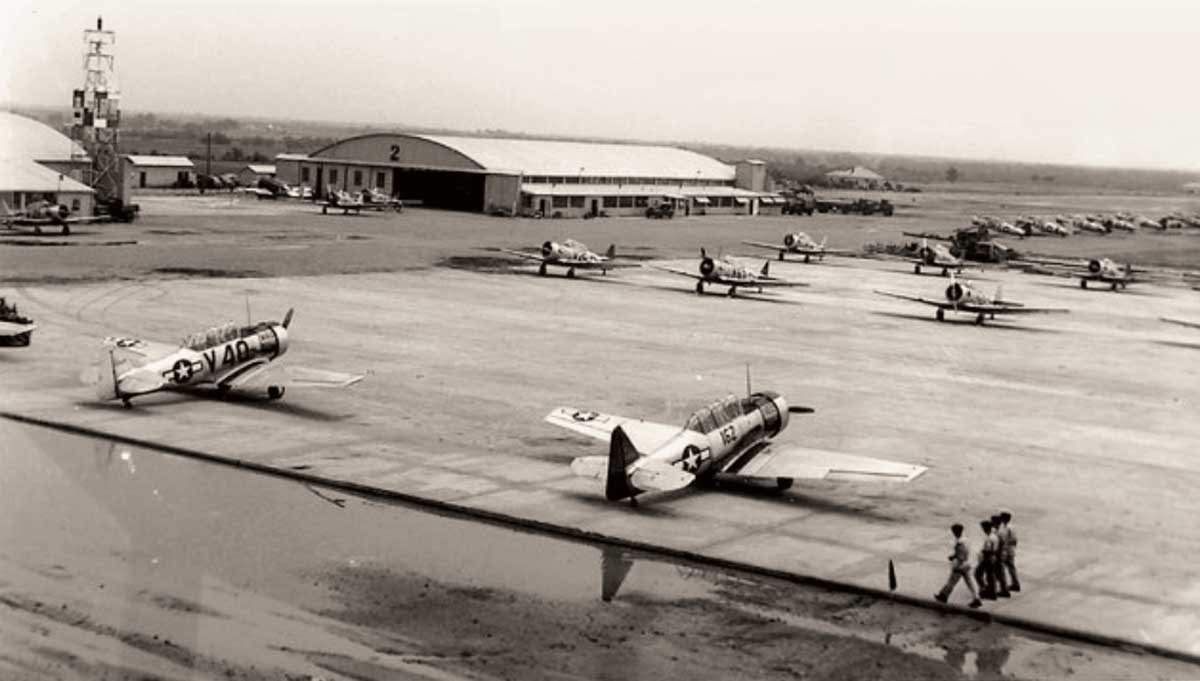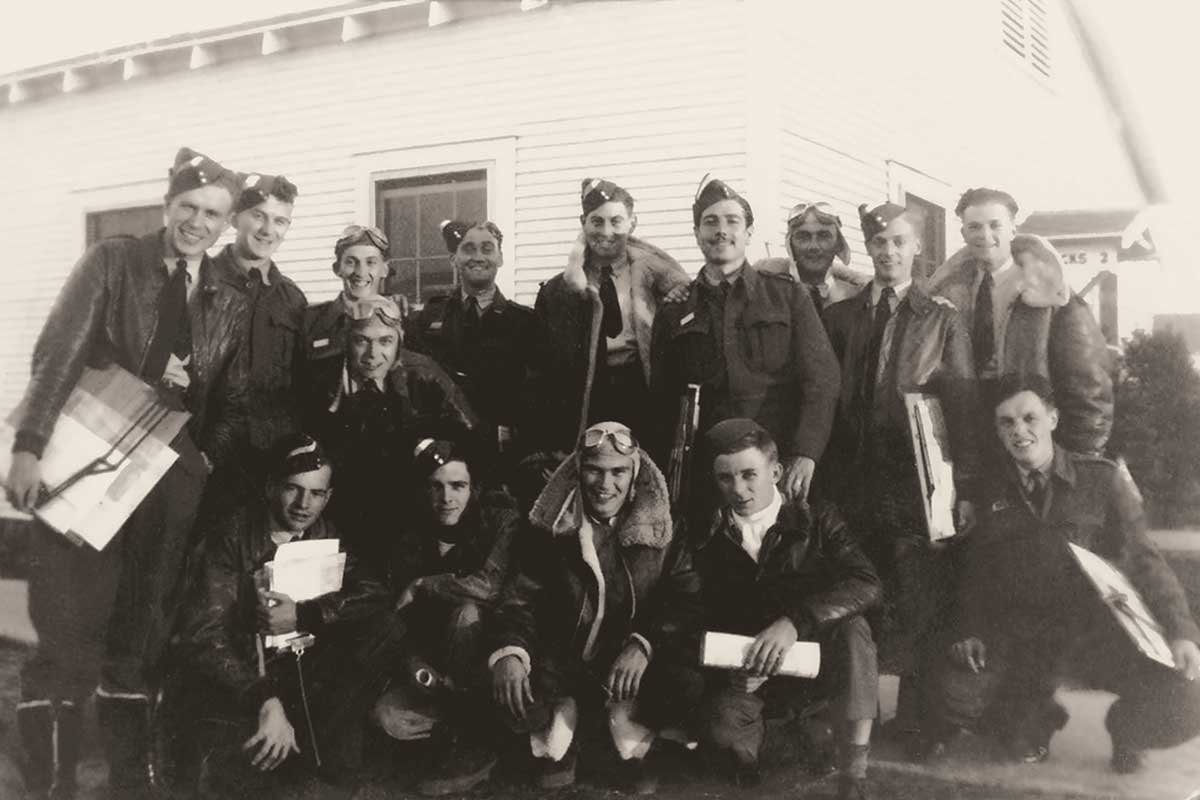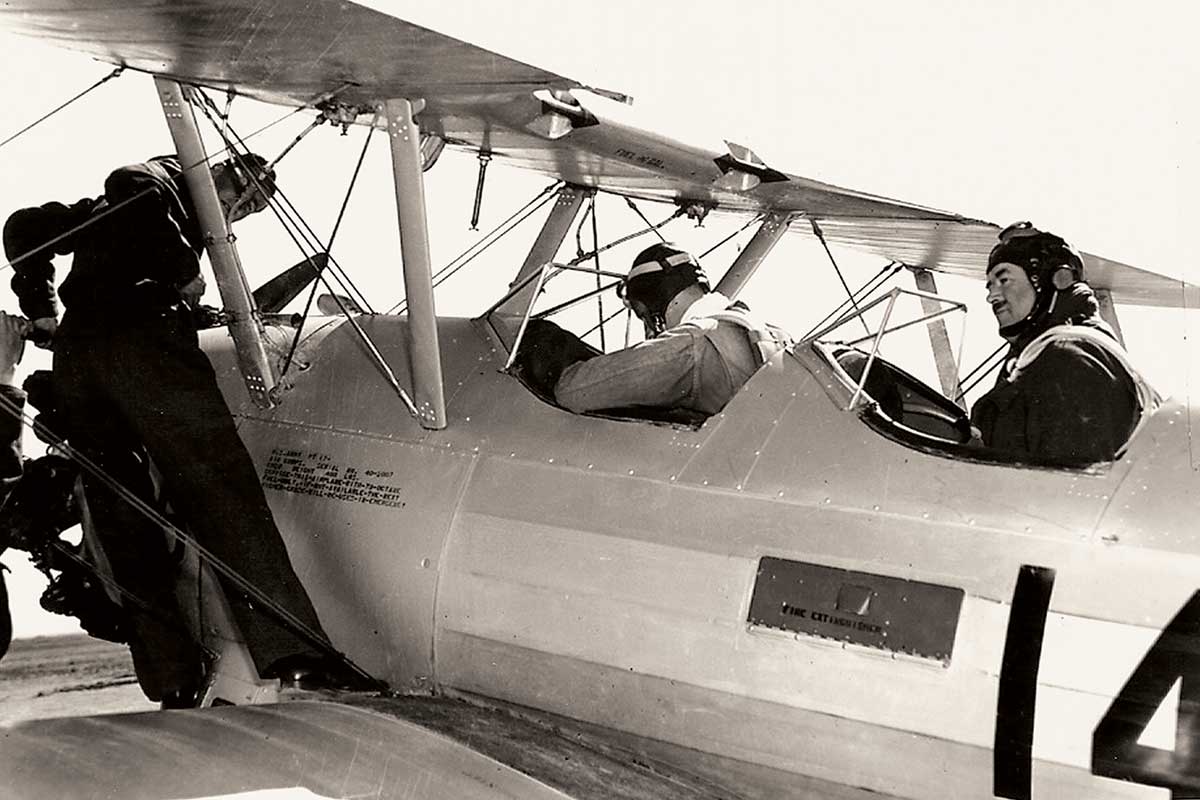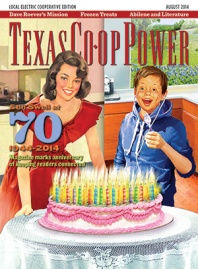A piece of family mythology was a story my mother told about meeting several British pilots while they were staying at her cousin’s house in Dallas. I doubted her until I discovered a small museum in Terrell and realized she actually had encountered cadets from the No. 1 British Flying Training School.
The school was established in 1941 in Terrell, carved out of countryside farmland. About 2,200 Royal Air Force cadets trained to become World War II pilots because training in their own country had become impossible. The danger of enemy attack, England’s weather and the island nation’s size were all impediments to preparing pilots for war.
Six civilian airfields across the country were chosen for the training, but the Terrell school was the only one to operate throughout the war. The school was located at the site of Terrell’s current municipal airport.

The first and largest of these schools was in Terrell, east of Dallas.
No. 1 British Flying Training School Museum
Eric Gill, an 18-year-old from Kent, was among those sent to Terrell to train. Gill, now a retired petroleum engineer living in Dallas, remembers being among a group of cadets who left England for Canada, where they expected the training to occur. But upon arriving in Moncton, New Brunswick, they faced a three-day, three-night rail trip to Texas, stopping at various locations along the way. “Women brought bananas to us at the train,” Gill says. “We hadn’t seen bananas in years. Most of us didn’t know about the American training, and most didn’t know where Dallas was.”
But the cadets were greeted by a warm reception upon arriving in Terrell.
“The local townsfolk were out in force when the train arrived,” Gill says. “It was going to be a big thing for Terrell, and I think they all realized that.”
Although Jean Ann Ables-Flatt was 12 at the time, she remembers being impressed. “I thought they were awfully cute, even though I was too young for them,” she says. “But Terrell opened their homes, their hearts and their arms to the cadets.”
The social officer for the cadets offered some advice: “He said the Americans would be very friendly and that we would eat things we weren’t used to,” Gill says. “He told us that we should be on our best behavior because we were representing the United Kingdom.”
The food made the biggest impression on most of the cadets. “We were on pretty hard starvation-level food at that time. We had a pretty small ration. We had a lot of people in England to feed, and half of our food came from overseas,” Gill says. He notes that a lot of the country’s imported provisions wound up at the bottom of the sea because of attacks from enemy forces patrolling the ocean.
In Texas, the cadets sat down to fare such as corn on the cob—used only for animal feed in England—and grits. “They were so excited to get good meals compared to what they’d been getting in England,” Ables-Flatt says. “It was Southern hospitality we offered. That’s why the Englishmen kept coming back to Terrell [after the war was over]—because of the Southern hospitality. It was always a very positive experience for them.”

Americans joined the British flying students after the U.S. entered the war when Pearl Harbor was attacked.
No. 1 British Flying Training School Museum
That hospitality, and the cadets’ attempts to express gratitude, caused some confused moments. Sometimes cadets would call a gracious hostess “homely,” which would have been a compliment in England.
The more than seven months of training consumed the cadets’ time. “We had Wednesday evenings free and could be out until 10 p.m.,” Gill remembers. “We would walk into town to the drugstore and buy things we needed. People were really nice to us. They would come to the gates at about 7 p.m. and take us to town, to their homes or to a movie.”
He says that after the young men completed their duties on Saturday, they were free until 10 p.m. on Sunday. With a bit more free time, they’d sometimes hitch a ride into Dallas, staying at the homes of locals or at the YMCA, where they could get a cot for the night and coffee and a doughnut the next morning for 25 cents. “To this day, I’ve always been thankful to the YMCA,” Gill says.
Ables-Flatt remembers the cadets marching into Terrell on Sunday mornings to go to church and recalls them congregating at Bass Drugstore. “They had a fountain there, and the soldiers could meet their girlfriends,” she said. She recalled a young woman who became so crazy over the cadets that when one class boarded the train to leave, she jumped on board and rode all the way to Chicago with them.
One of the ways the cadets repaid Terrell’s generosity was with a revue performed at the high school. “It was very clever, and everyone came to see it,” Ables-Flatt says, singing a snippet of one of the songs in the show.
The motto of the No. 1 British Flying Training School was, “The seas divide, but the skies unite,” and for the five years the school was in operation, the United States and Britain were united in the risky task of getting pilots ready for war.
British poet Rupert Brooke likely had never heard of Terrell when he wrote, “If I should die, think only this of me: That there’s some corner of a foreign field that is forever England.” In Oakland Memorial Park, the RAF Cemetery remains forever England. It is the burial place for 20 cadets who died in Terrell—19 in training accidents.


